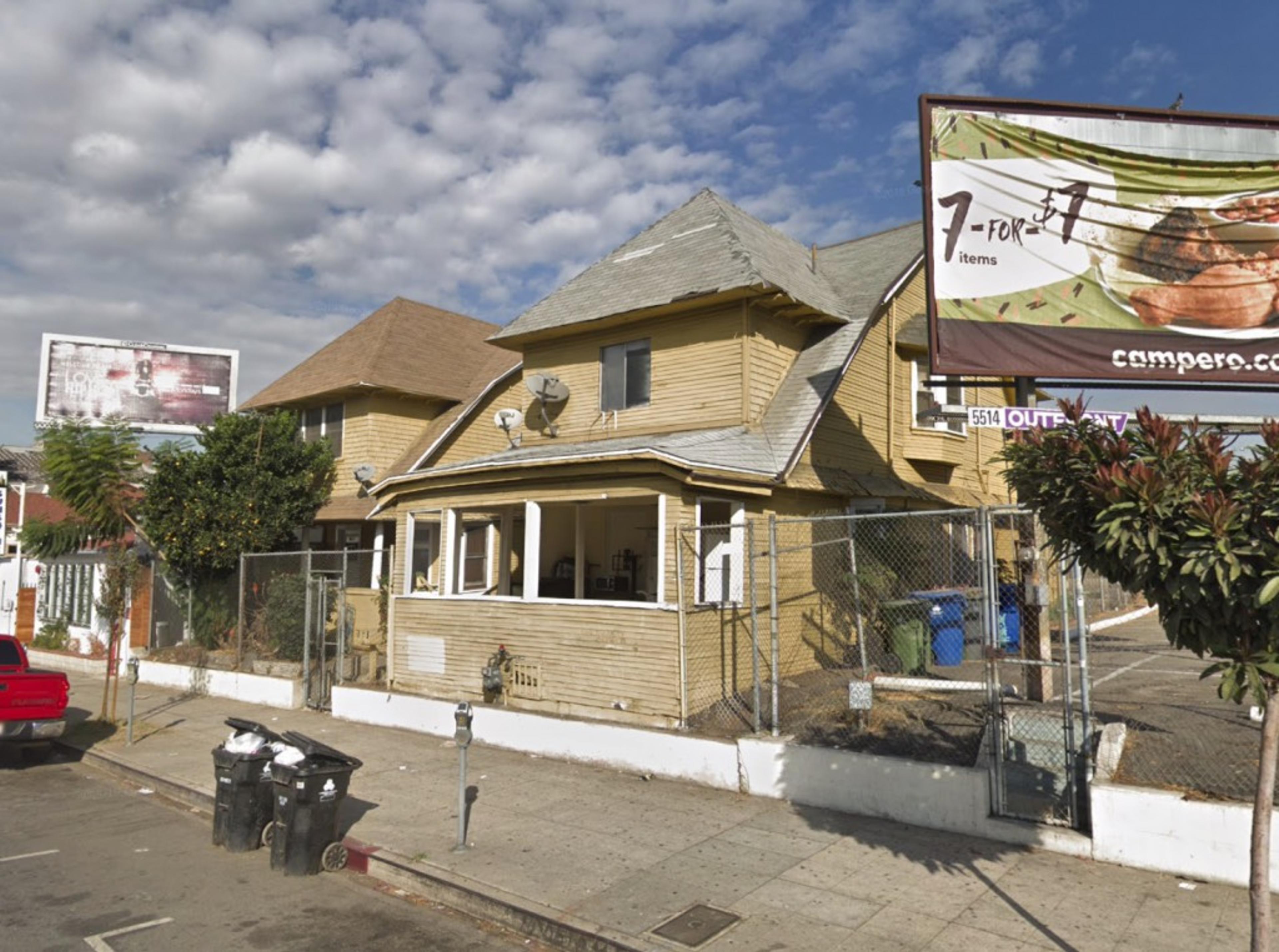They won’t be happy until every shingled building in Los Angeles is gone. I mean, they’re kind of obsessed with them. They who? Everybody. Both sides of the political spectrum. Social engineers on their path of well-intentioned apocalypse in concert with the developers who play them for useful idiots, that’s who. I honestly don’t care who. Just stop tearing down all the wooden houses already.
The surface lot next to the Adelphia (Leonard A. Cook), 1913), and two adjoining single family homes, is to be built upon with a TOC project developed by the Nemans.
1521; 1523, left, behind the tree
Poor Adelphia, tallest thing on the block for 107 years, now to have a seven-story building gleefully five-foot side yard all jammed up against your windows
It’s unclear when these two were built; the Assessor doesn’t list build dates and they’re not on DBS, which places them pre-1905. 1521 West 8th is listed as a fine six-room house for rent “to responsible party with references” in November 1902; it is soon occupied by Edward A. Geissler, Vice President of the George J. Bickel Company, who stays through 1906.
Also in the early years of the century, its neighbor 1523 was taking in boarders, and by 1906 you could go to an auction of all their nifty stuff:
Same old story: developers replace two large houses with a piddly few low-income units, and’re therefore given carte blanche to build tall and dense with no open space, and God forbid you have a car.
Some will argue, but these aren’t that good. Or important. But I want you to remember them. Because soon there won’t be any of them. There will be nothing but eighty-foot boxes with no open space—just like this project—because that’s what y’all voted for with your Measure JJJ, bless your little hearts.
About Nathan Marsak
NATHAN MARSAK says: “I came to praise Los Angeles, not to bury her. And yet developers, City Hall and social reformers work in concert to effect wholesale demolition, removing the human scale of my town, tossing its charm into a landfill. The least I can do is memorialize in real time those places worth noting, as they slide inexorably into memory. In college I studied under Banham. I learned to love Los Angeles via Reyner’s teachings (and came to abjure Mike Davis and his lurid, fanciful, laughably-researched assertions). In grad school I focused on visionary urbanism and technological utopianism—so while some may find the premise of preserving communities so much ill-considered reactionary twaddle, at least I have a background in the other side. Anyway, I moved to Los Angeles, and began to document. I drove about shooting neon signs. I put endless miles across the Plains of Id on the old Packard as part of the 1947project; when Kim Cooper blogged about some bad lunch meat in Compton, I drove down to there to check on the scene of the crime (never via freeway—you can’t really learn Los Angeles unless you study her from the surface streets). But in short order one landmark after another disappeared. Few demolitions are as contentious or high profile as the Ambassador or Parker Center; rather, it is all the little houses and commercial buildings the social engineers are desperate to destroy in the name of the Greater Good. The fabric of our city is woven together by communities and neighborhoods who no longer have a say in their zoning or planning so it’s important to shine a light on these vanishing treasures, now, before the remarkable character of our city is wiped away like a stain from a countertop. (But Nathan, you say, it’s just this one house—no, it isn’t. Principiis obsta, finem respice.) And who knows, one might even be saved. Excelsior!””
Nathan’s blogs are: Bunker Hill Los Angeles, RIP Los Angeles & On Bunker Hill.
